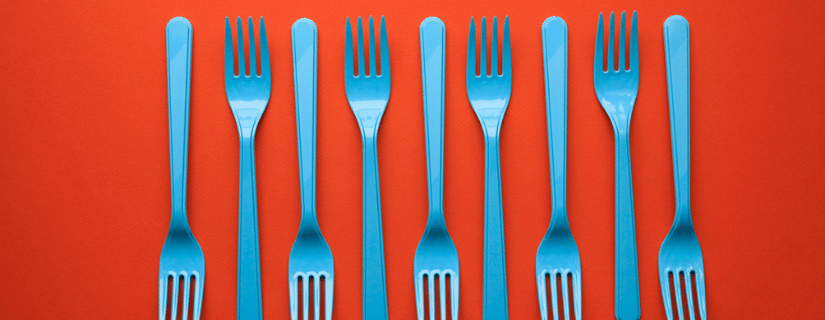
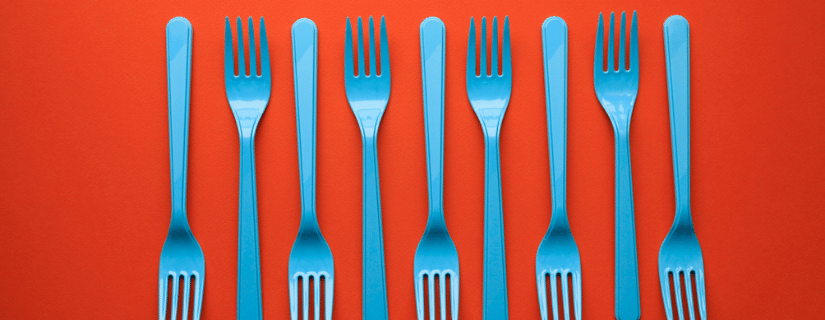
Today, traditional restaurant marketing strategies like word-of-mouth and flyers aren’t enough to get your name out there. Online marketing has opened up new possibilities to reach a wider audience with more targeted messages. To help you get in on the action, here are some of the best marketing ideas for restaurants looking to get more diners and build a loyal following.
With so many options out there, as a restaurant owner it can be hard to know where to start with your marketing plan. As a local business selling an experience, some strategies will work better than others.
Below you’ll find actionable ideas for how to promote your restaurant and reach new audiences while keeping existing customers loyal. The ideas are split into the following channels and types of marketing, where your efforts will see the most impact:
Looking for a tool to manage your restaurant’s online marketing?Sendinblue offers a suite of features to engage with your customers and reach new ones, including email and SMS campaigns, contact signup forms, and Facebook ads. |
19 Ideas to Boost Your Restaurant Marketing Strategy
Before you jump straight into these ideas, remember your aim should be to create a realistic marketing plan for your restaurant. Some of the suggestions, like having a website that gives diners the right information, are essential marketing actions for any restaurant. But I don’t suggest you try all the ideas below at once.
Some strategies will be easier to implement than others so you should consider both your budget and resources to choose the right ones for your restaurant.
Improving your restaurant’s website
When it comes to restaurant marketing, your website is a crucial place to start. It’s the digital equivalent of your shop window — often the first impression a potential diner will get of your restaurant. So, not only does it need to look good but it must also make it easy for visitors to find what they’re looking for.
1. Win diners over with your content
The number one way to entice people to visit your restaurant is with quality photography. Mouthwatering food photos are the next best thing to people actually tasting your dishes before they visit.
It’s therefore important to invest in some professional photos of your menu items to showcase on your website. But you shouldn’t stop there. People also want to discover the ambiance of your restaurant. So be sure to include photos that reflect the impression you want to give, be it a cozy atmosphere, friendly customer service, or a classy environment.
Aside from imagery, a great way to show your restaurant’s personality is with a well-written “About Us” section. This is a chance to tell your story and humanize your brand by introducing the people behind the business. How did your restaurant start? What inspires your food? What makes you different? All this will help create an emotional connection with your audience and persuade them to try your restaurant for themselves.
2. Design an attractive online menu
Your menu is among the most important elements of your restaurant’s website. Who doesn’t check out the menu before deciding on a restaurant? If you’re like me you’ll have already picked out your starter, main, and dessert before the booking is even confirmed!
The data backs it up too, with one study in the U.S. finding that 86% of people regularly look at a restaurant’s menu online before eating out.
Here are some tips for your online menu:
- Dedicate a page of your website to your menu, rather than using a PDF. This makes it easier to access, especially for mobile users who are less keen to download items. Plus, even when they do, PDFs can be hard to read on mobile devices.
- Stick to key information like price and a short description of each dish to avoid overwhelming readers.
- Include a few images of your most popular dishes.
- Keep your menu up to date so diners aren’t disappointed when they visit.
3. Make it user-friendly
There’s no point in having a beautiful website if visitors can’t find the information they need. Ensure that when someone arrives on your site they immediately know what your restaurant is about. For example, the restaurant website below describes its food as “Classic Japanese favorites with a Mexican inspired twist”.
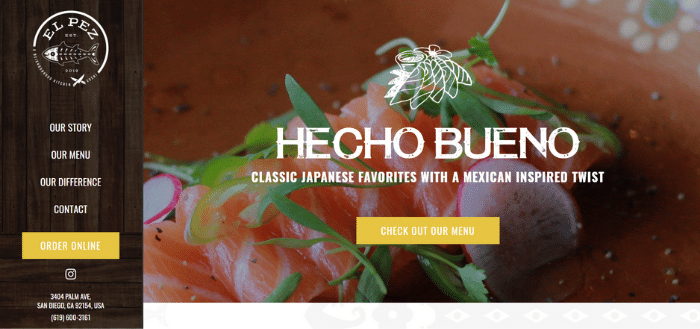

You should also make useful information like contact details, opening hours, and location easy to find. Use a simple site navigation to guide visitors to key pages such as your menu. Meanwhile, call to action buttons can highlight the most important steps — in the example above these are “order online” and “check out the menu”.
To keep customers from falling through the cracks, make sure they can do as much as possible through your website rather than having to call up. For example, offer online booking for quick and easy table reservations. You could even use a live chat tool so people can contact you for any queries directly from your website.
4. Offer online ordering
Even before Covid-19 hit, the popularity of online food delivery was on the rise. And now research suggests this trend has accelerated by almost three years. So, if you haven’t already, now is the time to jump on the online ordering bandwagon.
If you’re put off by the logistics of managing online orders yourself, partnering with a delivery service like Uber Eats, Grubhub, or DoorDash is the way to go. These have the bonus of marketing your restaurant to people who might not otherwise have found it.
5. Launch a blog
Once you’ve covered the basics in your restaurant’s website, one way to add marketing value is by starting a blog. This offers a platform to share news such as upcoming promotions, changes to your menu, and events. Plus it’s a chance to take your audience behind the scenes with content like staff interviews and stories about your suppliers and dish creation.
A blog is also a valuable tool for increasing your website’s rankings in search engines since they favor sites that are updated regularly with new content. To learn more, check out our guide to starting a small business blog.
Ranking on search engines
Once you’ve perfected your website, you need to make sure people find it — and not just those that had already heard of your restaurant!
Ask yourself, what’s the first thing you do when you want to find a restaurant to try? Most of us will hop straight onto Google. In fact, when it comes to looking for local products, services, or experiences, four in five people turn to search engines.
So, if you can get your restaurant to appear in relevant search results, you’ll tap into this audience of potential diners.
6. Optimize your Google My Business profile
When you’re starting out it’s hard to get your website straight onto Google’s first page. But luckily there’s a fast-track way to the top of results — via your Google My Business listing. And the best part is that this restaurant marketing trick is completely free!
Your Google My Business profile is a selection of information about your business shown on Google. And it’s among the most important elements of local SEO, that is getting your business to rank highly in searches related to a location, like those containing a place name or the words “near me”. This is because these profiles appear in the results of local searches on Google and Maps.
For example, below is what you’ll see top of the results when you search “Italian restaurant Seattle”:
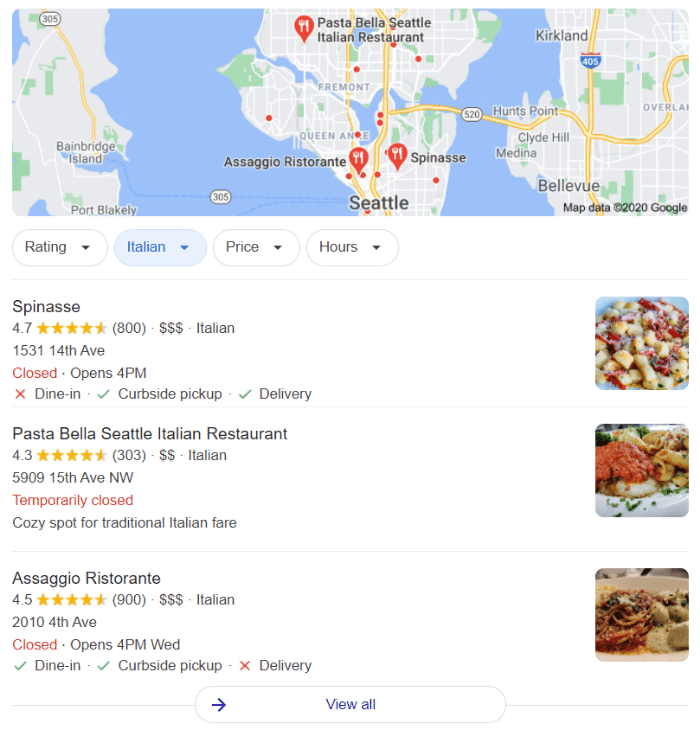
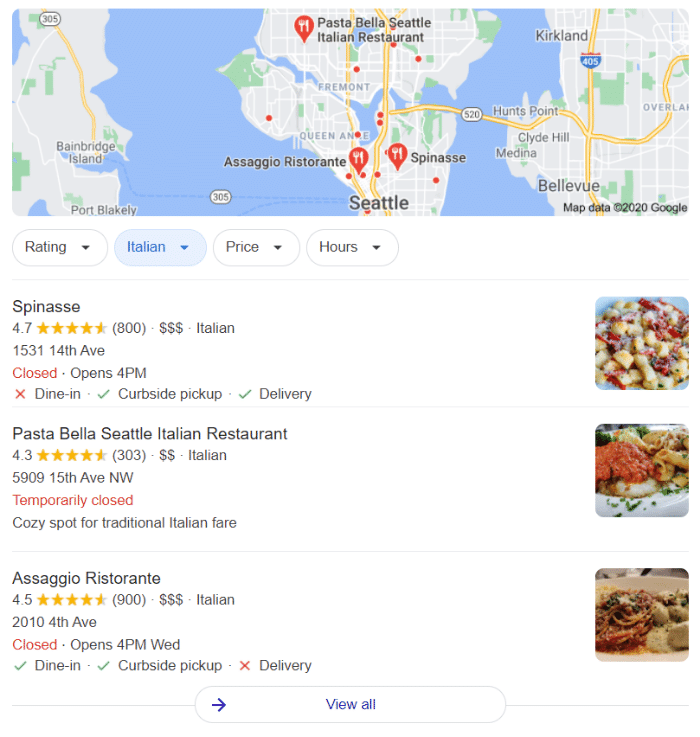
You can increase your chances of being featured by claiming and updating your Google My Business profile. For example, you should:
- Fill out basic information like your restaurant’s name, address, contact details, hours, and category.
- Add links to your website, menu, and online reservations.
- Upload photos of your dishes and location.
- Respond to any reviews you receive — more on this below.
For detailed instructions, we’ve got a whole article on how to optimize Google My Business listings.
7. Get on review sites
Another feature that dominates local restaurant search results is online review sites. For example, the top result after Google’s local pack in the “Italian restaurant Seattle” search used above was Tripadvisor. So getting your restaurant listed on these sites is another way to boost your search visibility.
As with Google My Business, dedicate some time to creating your profile on the main review sites. Aside from Tripadvisor, some other popular ones for restaurants are Yelp and OpenTable.
Once you’re set up you’ll also be able to manage your reviews — and you should make full use of this by responding to as many as possible, both positive and negative. Acknowledging positive reviews will make your customers feel valued, while addressing issues raised in negative reviews is a chance to showcase your top quality customer service.
You should also be proactive in encouraging diner reviews — the positive ones are restaurant marketing gold. In one U.S. study 68% of respondents said they’d tried a new restaurant because of positive online reviews.
The easiest way to get more reviews is to ask! This might be in person at the end of meals or in any communications you send to customers. You could also offer incentives like a discount on their next meal in return for leaving a review.
Marketing your restaurant on social media
Social media offers a way for restaurants to engage directly with existing and potential customers. Below are some ideas of how you can use it to its full potential.
8. Be active on Instagram
Instagram marketing works well for restaurants because it’s all about visual content, making it the perfect platform to share your best food photos. To broaden your reach use relevant hashtags, especially location-specific ones that will help locals discover your account.
When creating posts, aim to keep a consistent feel in terms of color scheme and the way you photograph food. This will ensure your business’ page looks clean and professional like the example below.
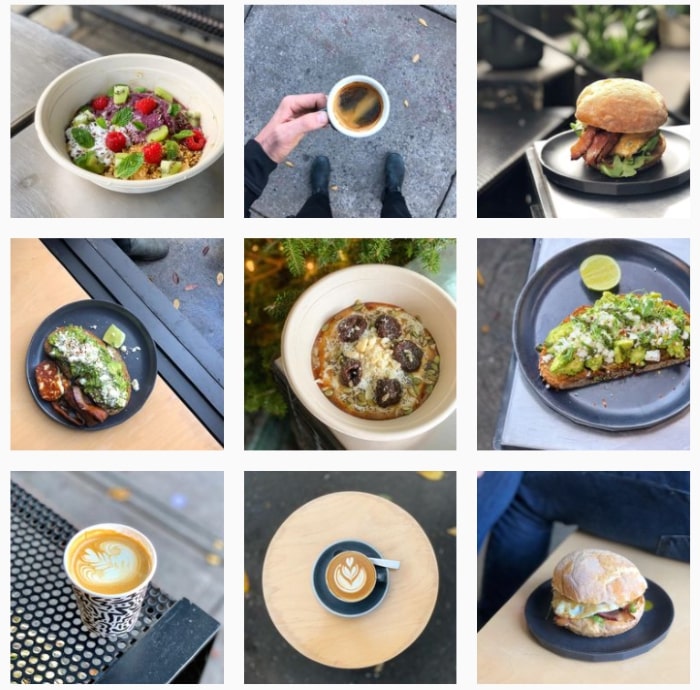

9. Give video marketing a try
Once you’ve got a steady flow of quality photos for your Instagram, you can up your game by adding video content to the mix. Much like your blog, videos can give a more intimate view of your restaurant and bring it to life for your audience. For example, rather than a still image, you could post a video of your food in action, like someone pouring over a sauce or making the first cut into a dish.
You can share short videos using the Instagram stories feature. Or if you’re feeling brave you could even try going live from your restaurant. For example, take your audience behind the scenes from your kitchen and chat to staff or give them a taste of your restaurant’s atmosphere out on the floor.
Speaking of stories, video is the perfect format to tell your restaurant’s own story. Once you’ve dipped your toes into restaurant video marketing you could go all out and create a brand video that shares your journey and vision as a business. This will work not only as social media content but also as a way to introduce your restaurant on your website.
If you decide to go down this route, this video marketing guide will take you through the key steps.
10. Get your audience involved with user-generated content
While creating engaging content for your audience should be central to your restaurant’s social media strategy, you also need to find ways to reach new people. But your existing audience can still help you through what is called user-generated content (UGC).
On social media UGC normally takes the form of posts by individuals about your brand. Similar to reviews and word-of-mouth, people trust this external content more than if it came from the company itself. Plus, these posts can help you reach new audiences that aren’t already following you and hopefully inspire them to discover your brand.
As a restaurant, your job is made easier by the fact that today’s diners are always on the lookout for an Instagram-worthy food snap. But there are ways you can give people an extra nudge. For example, you could run a giveaway contest where anyone who shares a picture of their meal on social media with your hashtag or account tagged gets put into a prize draw.
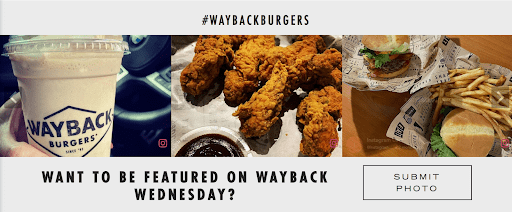
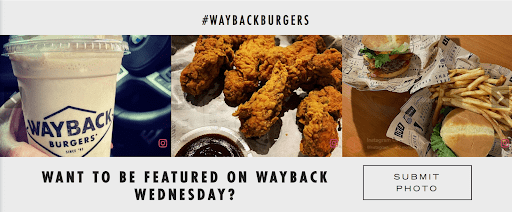
11. Reach out to food bloggers and influencers
To take your UGC to the next level you can target individuals with larger online followings and a good reputation for their advice. This doesn’t need to be an A-list celebrity — instead research bloggers and influencers in your area with up to around 10,000 followers who create content about local food spots. Then invite them for a free meal in return for sharing their experience at your restaurant with their audience.
To find potential candidates, searching relevant Instagram hashtags is a good place to start. You’ll get the best results if the influencer’s audience is particularly suited to your restaurant. For example, you might find someone who specializes in a niche like vegetarian or gluten-free food.
12. Use Facebook ads
Facebook ads offer another affordable marketing tool for restaurants to reach a wider audience online. The advantage of these ads is that you can be highly targeted in who you want to see them. For example, you can limit the audience to a set radius around your restaurant, an age group, and those whose Facebook activity suggests an interest in a cuisine or type of restaurant.
If you already have a contact list of customers you can also use this for your Facebook ad targeting. One option is to create a lookalike audience from your list made up of people that match the profile of your existing customer base. Or you can show ads to the existing customers on your list. For this type of ad you could offer a special promotion to get people to come back to your restaurant.
If your contacts are on Sendinblue’s platform, follow these instructions to create Facebook ads directly from your account using your lists.
Email and SMS marketing
Email and SMS are effective marketing channels for restaurants as they let you reach customers directly via their inbox to create more personal connections between visits.
If you’re looking for a solution to start sending today, Sendinblue lets you create email and SMS campaigns from one platform with features like personalization and automation to make them more effective.
13. Build a contact list
Before you start thinking about the content of your campaigns, you first need to build a list of people you can contact.
When asking people to sign up to hear from you, you have to give them a reason to do so. For example, will they be the first to hear about new menu items? Will you send them exclusive promotions? Or will they get insider content like recipes? Whatever you have in store for subscribers, be sure to emphasize the benefits for them to get more signups.
The next step is to promote signups in as many places as possible. These include:
- Adding a form or popup to your website
- Requesting signups during the online booking process
- Collecting contact details in your restaurant either with physical signup cards or using a tablet
- Asking people to opt in when they sign in to your WiFi
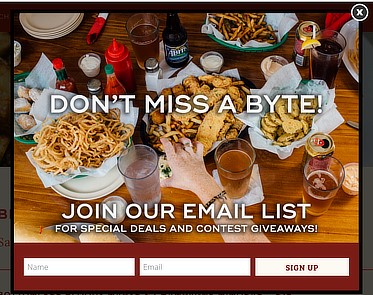

Remember you’ll need to comply with the relevant data protection regulation where you operate when collecting and using contact data. You can get up to speed with the different legal requirements in the Sendinblue Academy Data Protection in Email Marketing module.
14. Send email newsletters
Once you’ve started a list of contacts, you’ll want to send them regular emails to stay connected and keep your restaurant top of mind. You can do this through a newsletter format sent at consistent intervals.
The most important thing is to offer value so that subscribers continue opening and reading your emails. Content could include:
- Updates to your menu
- Upcoming events
- Promotions you’re running
- Links to blog posts if you have one
Rather than including all the information in your email, use call to action buttons like in the example below so interested readers can click through to find out more.
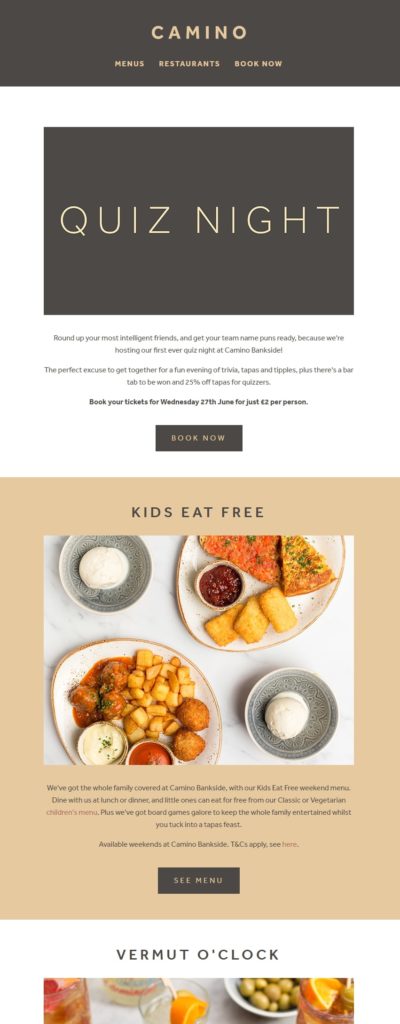
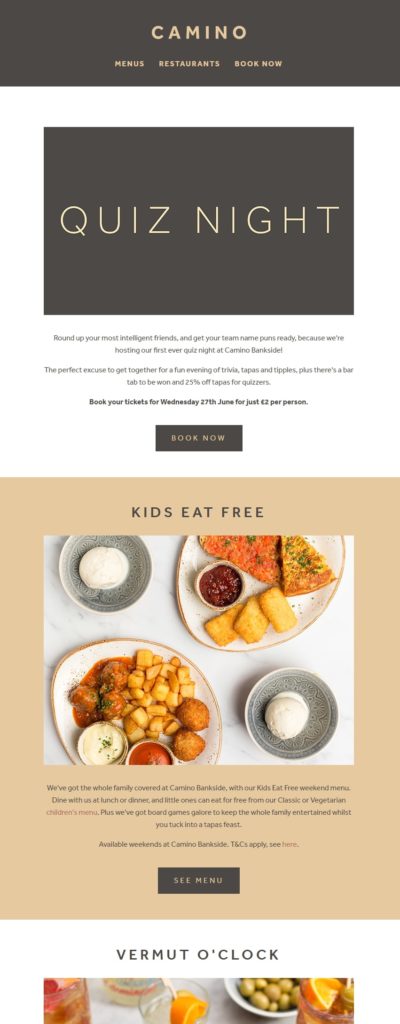
To get started on your own, follow our guide to creating an email newsletter.
15. Run automated email campaigns
Email marketing will be most powerful for your restaurant when you tailor messages to the recipient. But that doesn’t mean you have to send out your emails one by one! With email automation software you can send relevant messages to individual subscribers at the right time for them.
An easy example to start with that works well for restaurants is the birthday email. All you need to do is collect subscribers’ birthdays when they sign up and then set up automated emails to go out on the specified date. Your email can treat the recipient to a freebie or discount and encourage them to visit your restaurant for their birthday.
If you want to try it for yourself, take a look at our guide to sending birthday emails.
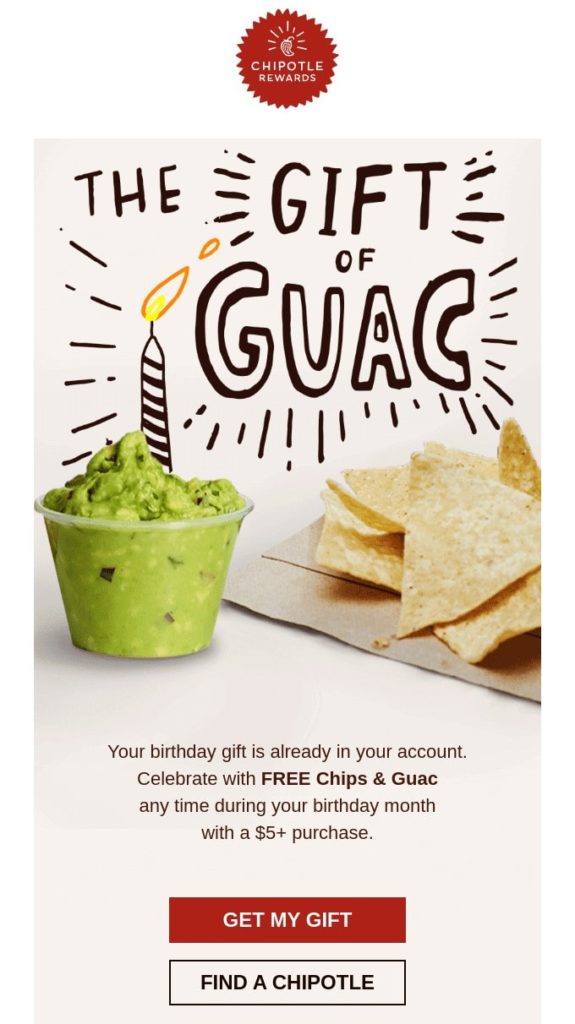
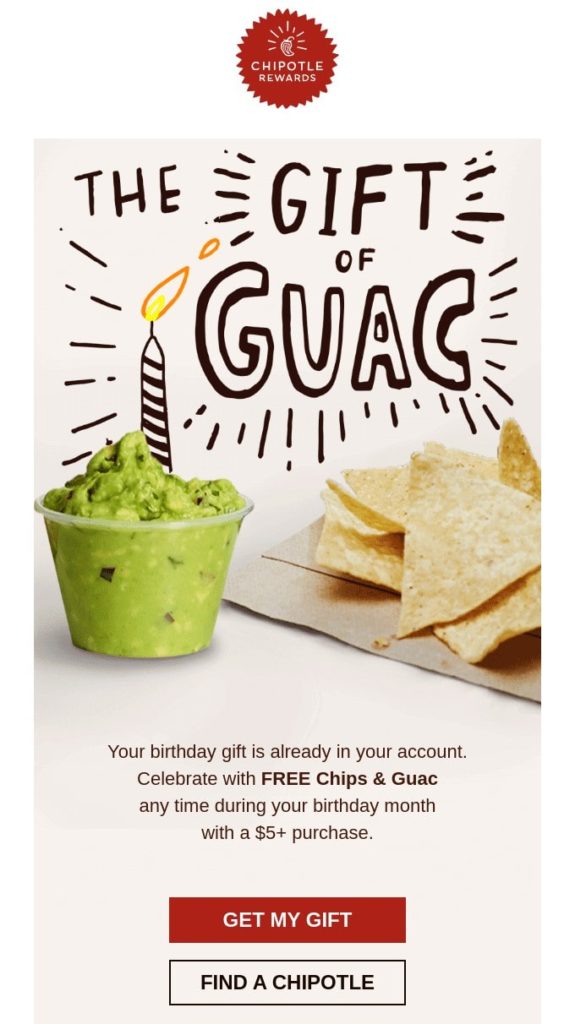
16. Text your customers
While email is a great channel for longer, more visual content, restaurants can use SMS marketing for short, attention-grabbing messages. For example, you could send out a text to your contacts to alert them about a promotion you’re running.
SMS is also the best choice for time-sensitive messages since the recipient will likely see your text pop up on their phone straight away. To get the most out of this, set up strategic automated SMS messages, like a request for a review after someone visits your restaurant. That way diners will receive your message when the meal is still fresh in their mind (and belly!).
Restaurant promotions ideas
While up until now the focus has been online marketing strategies for restaurants, below are some ideas for promotions you can run in your restaurant itself. But you can still make use of digital channels like social media and email to advertise them.
17. Start a loyalty program
Your challenge as a restaurant owner is not just to get diners in the door but to keep them coming back. And with so much competition out there you can’t always do that with good food alone. Your answer is a loyalty program that rewards repeat customers with incentives like discounts and free items.
The old-school way to set this up is to record visits using physical stamp cards. However there are now handy digital tools you can invest in to manage your loyalty program. Not only can these help you track diners’ visits and spending, but you can also create more personalized experiences by tailoring rewards to customers’ purchase history.
18. Create holiday-themed promotions
Holidays throughout the year — especially Christmas — offer an important marketing opportunity for your restaurant as you can bring in more diners with promotions related to the event.
One option is to adapt your menu by adding seasonal specials you can promote around different holidays. As well as individual dishes, you could create set menus at attractive prices to draw in diners for specific events like Valentine’s Day or Christmas parties.
Another way to bring in extra revenue around Christmas is to sell gift cards. These have the added benefit of helping you reach new people in your existing audience’s network who may become loyal customers in the future. Ideally, as well as promoting sales in your restaurant, customers should be able to buy digital gift cards via your website. That way last-minute Christmas shoppers can buy one without needing to visit your restaurant.
19. Give back to local causes
As a local business, restaurants must find ways to build their reputation and win over the community. One way to do this is by supporting a cause close to their hearts.
To promote this to diners, you could dedicate a menu item to a local cause and donate a proportion of the profits the dish makes. If you don’t have the means to do this long term, you could run a time-limited campaign focused around a particular awareness day or month.
As well as monetary donations, another option is to offer your restaurant as a free venue for a local event raising money for a charity or community group. This is a great way to get more locals to discover your restaurant while supporting a worthy cause.
Get Started on Your Restaurant Marketing Plan
Now you should be armed with plenty of ideas to build out your restaurant’s marketing strategy. Be sure to include a mix of channels in your plan so you can reach as many potential diners as possible. And whatever the channel, keep your branding and messaging consistent to make your restaurant stand out from the competition.
Looking for ways to keep learning and improving your restaurant marketing? Sign up to Sendinblue’s newsletter to get our latest digital marketing tips direct to your inbox.
 Deutsch
Deutsch




















